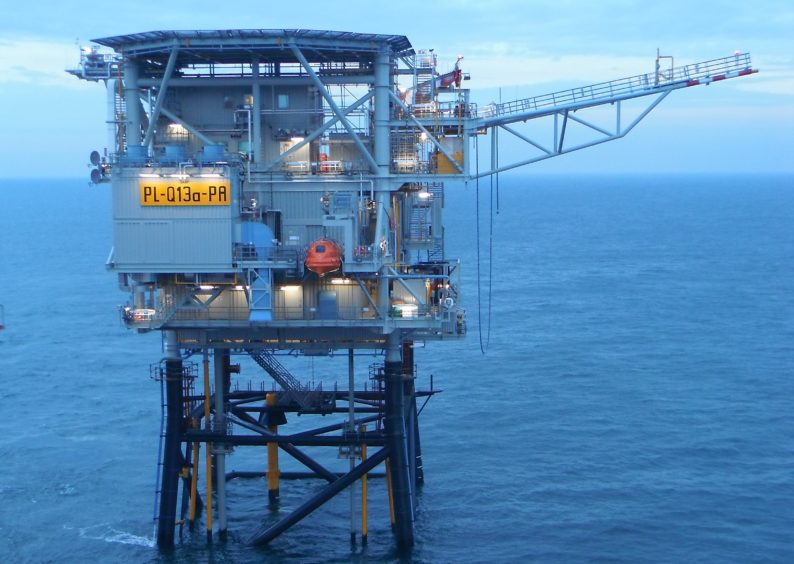
Crown Estate Scotland is set to launch a rather interesting mini-study.
With the oil and gas sector looking to support the energy transition (at last), the idea is to investigate the re-purposing of North Sea platforms into hydrogen production facilities.
Now, on one level, I’m with Tom Baxter on this: why do something offshore when you can do it cheaper onshore? But the comparison might not always be as clear-cut as that.
For starters, there’s already a lot of offshore oil and gas infrastructure out there – and decommissioning it won’t be cheap. So, could in-situ hydrogen re-use make overall economic sense for certain installations? And, if successful, could this take us up the learning curve and unlock vast renewables potential further out to sea?
It has to be a positive sign that folk are interested in finding out. But beware the potential pitfalls of such ‘blue sky’ concept work.
This offshore hydrogen thing is soon set to become a reality – at pilot scale, anyway.
In 2021, across in the Dutch sector, the PosHYdon project will see Neptune’s Q13a oil and gas platform generating hydrogen via the electrolysis of seawater.
Located just 13 km off the coast, the platform has already been modified to import power via a cable from shore. And there’s a future option to directly tap into the nearby Luchterduinen offshore wind farm.
With a 1 MW electrolyser capacity, Q13a’s hydrogen output will be modest but it’s a valuable early step in establishing technical feasibility, including how the electrolyser gets on with seawater.
And as scale increases and unit costs fall, the economics will clearly start to improve – the questions are by how much and how soon.
But, why bother with platforms at all – why not bring offshore wind farm power to shore and make hydrogen ‘on the beach’?
For short distances, yes. But what about larger, more remote wind farms requiring long, expensive, DC (Direct Current) subsea cables plus hefty transformer platforms?
Beyond 100 km from shore, it could work out cheaper to convert power to hydrogen offshore and export the energy as molecules down a pipeline, not electrons down a cable.
And, of course, hydrogen is more flexible and valuable – you can store it and use it when and where it’s most needed.
The Dutch understand this well and are already eyeing large-scale electrolysers on more distant platforms to act as supply hubs for their hydrogen economy.
So, where might all this take us?
Just like the oil and gas sector, offshore wind began in relatively shallow, near-shore waters with ‘bottom fixed’ infrastructure anchored to the seabed.
But the next big thing is floating offshore wind (FOW) with ever-taller turbines installed in ever-deeper waters – Equinor’s five Hywind turbines off Peterhead were the world’s first example. This technology enables large-scale wind developments much further from shore.
Of particular interest might soon be the northern sector of the UK North Sea, home to fields at the end of their economic life. True, many of the giant platforms out there are already at the end of their design life and ready for scrappage.
But others might still be viable, especially those built on massive concrete gravity-based structures (GBS).
As is well documented, shifting these would be no small task – if feasible at all. So, why not clean up the subsea storage and replace the current topsides with electrolysers?
Meanwhile, over in the Norwegian sector, new floating wind turbines are set to reduce the carbon footprint of oil and gas operations by supplying green power to the existing platforms at Gulfaks and Snorre.
Thinking even further ahead, could this inspire entirely new energy systems? Think remote floating, deepwater wind farms feeding adjacent new-build floating hydrogen production facilities.
Another major positive from the Dutch pilot is the encouraging sight of an upstream oil and gas operator collaborating across sectors: Neptune (Q13a operator) is working closely with Eneco (wind farm operator) and a number of key infrastructure players.
If the UK is to follow suit, deep integration on a commercial and technical level will be vital in support of the energy transition.
But a couple of words of caution.
Crown Estate Scotland understandably has a budget to work within and the value of their study tender isn’t large at £40,000 – but the corresponding scope of work ain’t small. And its conclusions might influence some key stop-go decisions.
Thinking back to the days when I threw together study proposals (then had to deliver on them), that doesn’t feel like an awful lot of man-hours. Let’s hope this doesn’t lead to too broad-brush an assessment which risks missing key aspects.
Furthermore, this is no everyday oil and gas concept study where the uncertainties are well-understood and can be mitigated. Everything here is new, unknown and evolving rapidly.
What appears technically unfeasible or economically unviable today might evolve into a winner in a few years’ time.
Conversely, what looks like a genius idea right now could get eclipsed by fast-developing alternatives.
There’s a strong argument for periodically re-visiting the conclusions of such studies – just to see if they still hold up.
But enough of the negativity. The Dutch have already taken an early lead. Let’s see what this study tells us and let’s get moving with our own energy transition activities.
Sanjoy Sen CEng FIChemE is a chemical engineer with over 20 years’ industry experience. He also holds an MSc in Petroleum Engineering and attained a distinction in his LLM in Oil & Gas Law from the University of Aberdeen where he considered a devolved Scotland’s future. He spent four years in the Oil & Gas Authority as a Senior Development Engineer and was the Conservative general election candidate in Alyn & Deeside in 2019. He writes here in a personal capacity.
